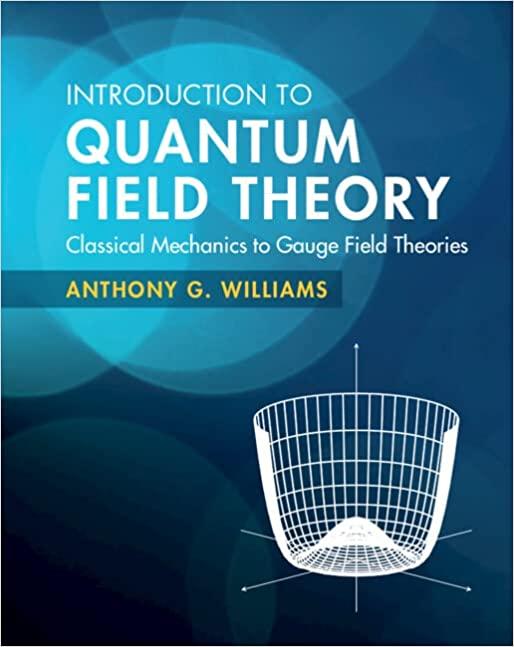The Lagrangian of a particle of mass (m) and charge (e) in a uniform, static magnetic field
Question:
The Lagrangian of a particle of mass \(m\) and charge \(e\) in a uniform, static magnetic field \(\mathbf{B}\) is given by \(L(\mathbf{x}, \dot{\mathbf{x}})=\frac{1}{2} m \dot{\mathbf{x}}^{2}+(e / 2 m) \mathbf{L} \cdot \mathbf{B}\), where \(\boldsymbol{L}=\mathbf{x} \times m \dot{\mathbf{x}}\) is the mechanical angular momentum.
(a) Show that the Hamiltonian is \(H(\mathbf{x}, \mathbf{p})=\overline{\mathbf{p}}^{2} / 2 m\), where \(\overline{\mathbf{p}}=\mathbf{p}-(e / 2) \mathbf{B} \times \mathbf{x}\).
(b) Obtain the Poisson bracket result \(\left\{\bar{p}_{i}, \bar{p}_{j}\right\}=e \epsilon_{i j k} B_{k}\).
(c) Show that \(\overline{\mathbf{p}} \cdot \mathbf{B}\) is conserved using Poisson brackets.
(d) Are components of \(\overline{\mathbf{p}}\) perpendicular to \(\mathbf{B}\) conserved?
Step by Step Answer:

Introduction To Quantum Field Theory Classical Mechanics To Gauge Field Theories
ISBN: 9781108470902
1st Edition
Authors: Anthony G. Williams





